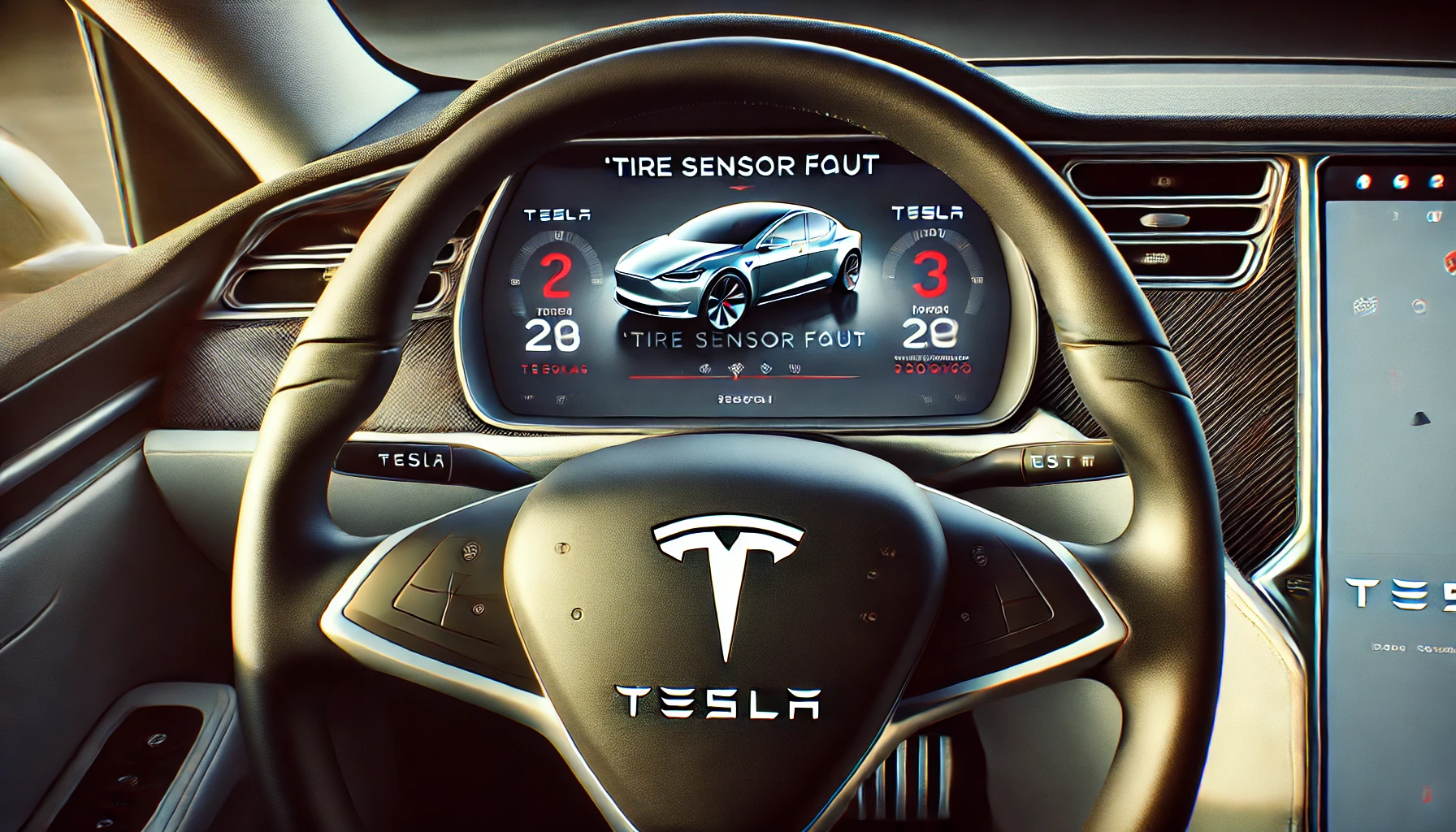
Tesla vehicles are known for their cutting-edge technology, including a sophisticated Tire Pressure Monitoring System (TPMS) that alerts drivers to changes in tire pressure. However, if you see a Tire Sensor Fault warning on your Tesla’s display, it indicates an issue with the TPMS. The good news is that it’s often a minor problem that can be fixed with a few simple steps. In this article, we’ll explore the common causes of a tire sensor fault in Tesla vehicles and provide a step-by-step guide to resolving the issue.
Common Causes of Tire Sensor Fault in Tesla Vehicles
Several factors can trigger a Tire Sensor Fault in Tesla vehicles:
- Low Tire Pressure: The most common cause of a tire sensor fault is low tire pressure. The TPMS system is designed to alert you when the tire pressure falls below the recommended level, which can cause a fault message to appear.
- Sensor Damage: Tire sensors can become damaged over time, especially during tire changes or rotations. A damaged sensor can no longer send accurate data to the TPMS, triggering the fault.
- Weak Sensor Battery: The tire sensors in Tesla vehicles are powered by batteries that typically last between 5 to 10 years. A weak or depleted battery can cause the sensor to malfunction and lead to a fault.
- Interference or Software Glitch: Radio frequency interference or a software issue in the TPMS system can also result in a tire sensor fault. Tesla vehicles rely heavily on software, and a glitch can occasionally cause false error messages.
- Recent Tire Service: If your Tesla’s tires were recently serviced, the TPMS sensors may not have been recalibrated properly, which can cause the system to display a sensor fault.
Steps to Fix Tire Sensor Fault in Tesla Vehicles
If you’re seeing a Tire Sensor Fault warning on your Tesla’s display, follow these steps to troubleshoot and resolve the issue:
1. Check Tire Pressure Manually
The first and simplest step is to manually check the pressure in all four tires using a tire pressure gauge. You can find the recommended tire pressure for your Tesla in the owner’s manual or by checking the label on the driver’s door.
- Inflate any under-inflated tires to the correct pressure.
- After adjusting the tire pressure, drive your vehicle for a few miles to allow the system to recalibrate. In many cases, this will clear the fault warning.
2. Reset the TPMS System via Tesla’s Touchscreen
If correcting the tire pressure doesn’t resolve the issue, you may need to reset the TPMS system. Tesla’s advanced systems allow you to reset the TPMS directly from the touchscreen:
- Tap Controls on the Tesla touchscreen.
- Select Service from the menu.
- Scroll down and select Reset TPMS.
- Confirm the reset and then drive your vehicle at a steady speed for about 10-15 minutes to allow the system to recalibrate.
If successful, the Tire Sensor Fault warning should disappear.
3. Inspect the Tire Sensors for Damage
If resetting the system doesn’t solve the problem, it’s possible that one or more of the tire sensors is damaged. The sensors are located inside the tires and are attached to the valve stem. Damage can occur during tire changes, especially if they are handled roughly.
If you suspect sensor damage, it’s best to visit a Tesla service center for a professional inspection. Damaged sensors will need to be replaced to restore proper function.
4. Replace Sensor Batteries
Each tire sensor in a Tesla is powered by a small battery, which usually lasts several years. If the battery is weak or dead, the sensor will stop functioning, causing a fault. Unfortunately, the sensor’s battery cannot be replaced separately, so the entire sensor must be replaced.
You’ll need to visit a Tesla-certified service center to have the faulty sensor replaced. Once replaced, the system will need to be recalibrated to function properly.
5. Perform a Software Update
Tesla vehicles rely heavily on software for many of their systems, including the TPMS. A Tire Sensor Fault can sometimes be caused by a software glitch. Tesla regularly releases software updates that can fix bugs and improve vehicle performance.
If you suspect a software issue, check if your Tesla has any pending software updates. To do this:
- Tap Controls on the touchscreen.
- Go to Software and check for any available updates.
- If an update is available, download and install it. After updating, check if the fault message has cleared.
Preventing Future Tire Sensor Faults
- Regularly Check Tire Pressure: Make it a habit to check your tire pressure at least once a month, especially during temperature changes, as fluctuating temperatures can affect tire pressure and trigger false warnings.
- Handle Tire Sensors Carefully: When having your tires changed or rotated, make sure the technicians handle the TPMS sensors carefully to avoid damage.
- Keep Software Updated: Always keep your Tesla’s software up to date. Software updates not only improve overall vehicle performance but also prevent system glitches that could affect the TPMS.
- Routine Maintenance: Include TPMS inspections as part of your vehicle’s regular maintenance schedule to ensure the sensors are functioning properly and their batteries are still healthy.
Conclusion
A Tire Sensor Fault in your Tesla vehicle can be frustrating, but it’s often a minor issue that can be resolved with simple troubleshooting. By checking tire pressure, resetting the TPMS system, and inspecting the sensors for damage, you can quickly fix the problem and ensure your Tesla is running smoothly. If the issue persists, visiting a Tesla service center for professional diagnostics and repair will get you back on the road safely.
